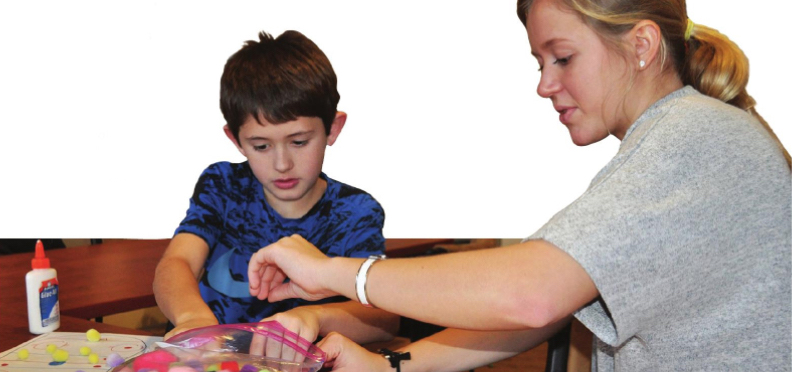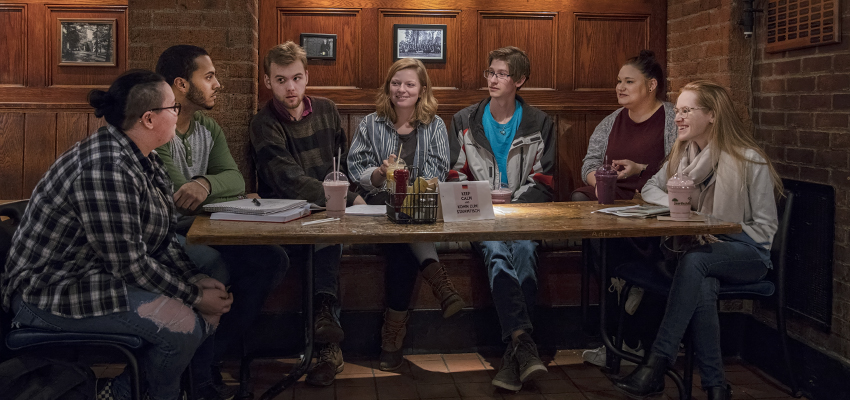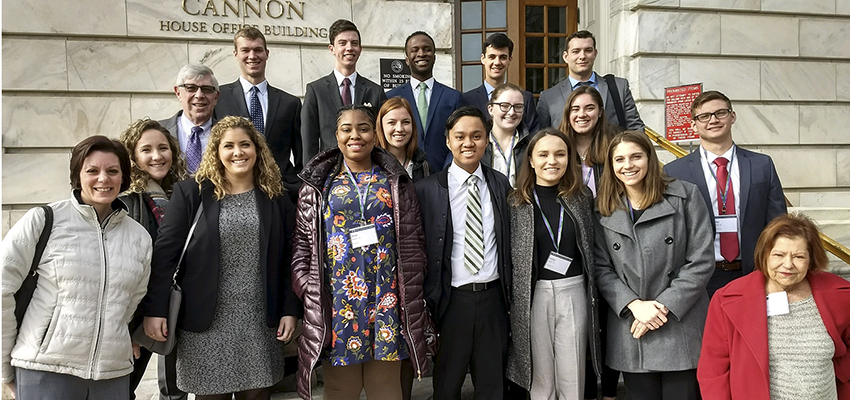
HWS News
5 January 2018 HWS Project Eye-to-Eye
A recent article in the Finger Lakes Times by Susan Clark Porter highlights the ongoing efforts of the HWS chapter of Project Eye-to-Eye, which pairs college students who have learning disabilities with elementary, middle and high school students who also have learning disabilities in order to empower them and help them find successes. In this capacity, HWS Project Eye-to-Eye volunteers have served as tutors and role models for Geneva students since 2010.
When it comes to learning differently, they see Eye to Eye
Susan Clark Porter, Finger Lakes Times
GENEVA
When a group of Geneva Middle Schoolers burst into Centennial Hall at Hobart and William Smith Colleges, it was both an eyeful and earful of activity.
The youngsters dropped their backpacks and coats at breakneck speed, then found a seat and a snack and not necessarily in that order. Once they settled down, that weeks Eye to Eye session began.

Eye to Eye is a national mentoring program that pairs college students with learning disabilities and/or ADHD (attention deficit hyperactivity disorder) with youngsters who also have learning disabilities or ADHD. Locally, there has been a chapter at Hobart and William Smith Colleges for about 10 years, but this year for the first time the Geneva middle-schoolers are meeting on campus with their mentors, not the other way around.
Stacy DiMartino, school psychologist at the Middle School, said organizers decided to hold the sessions on campus instead of the middle school to bolster interest. She thinks the move has increased the cool factor and said the kids seem to like the college venue more.
The group of about 10 mentors and mentees meets on Monday afternoons; the Middle School students who are invited to the program typically start participating in sixth grade and stay through eighth. Many of the college mentors participate for more than one year, too, DiMartino said.
She values the program because the college students know how to relate to their younger counterparts and although there are lessons being taught through art projects, they are not strict or structured. Also, DiMartino believes the sessions give the young students the opportunity to be quirky and themselves.
"Many of the middle-schoolers say I never met a college student with dyslexia [for example]," she said. "This program gives them the opportunity to see they're not alone and the skys the limit. They can go to college or get a job."
Sasha Carey, a William Smith senior who is double majoring in sociology and education, is co-coordinator of the HWS program. Originally from San Francisco, she became involved with Eye to Eye in high school and has spent all four years at college being a mentor. Her fellow co-coordinator, Allie Nixon, is also a William Smith senior who is majoring in psychology. She has been part of Eye to Eye for two years.
As soon as the youngsters take their seats, Carey launches into the lesson by asking the group what an ally is. She then has the middle-schoolers start identifying allies in their lives, whether they are a teacher, sibling or coach.
An ally doesnt have to be older, said Nixon, who then asks the group to raise their hands if they have more than one ally. Most do.
The students are then matched with their mentors to start their projects, which involve making their allies into a team that includes themselves.
"Remember, you cant carry a team by yourself," she said.
After breaking into pairs, the mentors and mentees brainstormed on their teams makeup.
There were high fives and loud exclamations as ideas were developed, but no shushing whatsoever. Sixth-grader Clark Mauchly, who plays hockey, had his team of allies arranged on a hockey rink. Sixth-grader Aemilia Lehman worked with her mentor, William Smith senior Phoebe Pohl, to fashion her allies from pipe cleaners. Owen Schading, also in sixth grade, retreated to another room with first-year William Smith student Lauren Rohlfs and together they created a football field, with Schadings allies assuming different positions on the team.
Some kids who finished their projects headed outside to run around as the others competed theirs. Then one by one, the middle schoolers explained their creations to the group.
Owen Schading said his mom was his team quarterback because she helps him the most. Eighth-grader Sean Wright included his cousins on his Olympic team of allies, especially an older cousin who took some of the same classes he now is in. Aemilia Lehman let her mentor present her team, which included Lehmans reading teacher.
"You have Mrs. Baxter? I love Mrs. Baxter," seventh-grader Aaron Carle shouted out.
Nixon and Carey said the program aims to promote self-esteem and confidence in youngsters who may not feel that way in school. Nixon said oftentimes at the beginning of the school year the middle-schoolers arrive shy and dont want to talk about themselves. Their mission is to change that.
Carey said its important for those with learning disabilities and ADHD to name their issues and erase the stigma they may feel. They also need to understand they arent stupid, but just learn differently.
"We want them to see they can come here if they want," she said.



